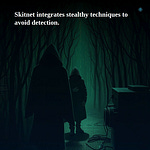The world of cybersecurity is in a constant state of flux, with cybercriminals always a step ahead, devising new strategies to exploit unsuspecting victims. One of the latest—and most alarming—threats emerging on this battleground is the ClickFix phishing campaign, attributed to the infamous threat group known as Storm-1865. First identified in December 2024, this campaign employs innovative social engineering tactics that primarily target the hospitality sector. Understanding ClickFix is essential for cybersecurity professionals and organizations aiming to safeguard their operations.
What is ClickFix?
The Mechanics of ClickFix Attacks
ClickFix represents a sophisticated phishing technique leveraging fake error messages designed to manipulate users into executing harmful commands on their systems. Here’s how it typically unfolds:
Phishing Email Delivery: Cybercriminals send emails that mimic official communications from reputable sources like Booking.com. These messages can contain alarming notifications about negative reviews, urgent account verifications, or inquiries that provoke immediate action.
Fake CAPTCHA Interaction: Clicking on these malicious links redirects users to a phony web page, where they are confronted with a simulated CAPTCHA. This illusion of legitimacy appeals to users’ instincts to comply, heightening their sense of urgency.
Executable Command Execution: Finally, users are guided to use keyboard shortcuts to open a Windows Run command window, where they unwittingly execute a malicious command. This command stealthily utilizes legitimate system binaries such as mshta.exe to download malware payloads—including credential stealers and Remote Access Trojans (RATs)—bypassing conventional security measures.
The Dark Family of Malware Associated with ClickFix
The ClickFix campaign is linked to several notorious malware types that highlight the breadth of the threat:
XWorm: A multifaceted malware adept at stealing sensitive information.
Lumma Stealer: Expert in pilfering credentials and financial details.
VenomRAT: A formidable RAT often deployed for espionage.
AsyncRAT and Danabot: Known for their robust backdoor capabilities, allowing persistent control of compromised systems.
NetSupport RAT: Utilizes legitimate remote access tools to maintain a foothold in affected infrastructures.
The Evolving Threat Landscape
Who's in the Crosshairs?
The primary victims of the ClickFix campaign are hospitality organizations, particularly hotels and travel agencies that use Booking.com. This far-reaching campaign spans North America, Oceania, and numerous regions across Europe and Asia, indicating how widespread the threat is.
Storm-1865: Adapting Strategies
Threat intelligence from Microsoft reveals that the evolution of ClickFix marks a pivotal shift in Storm-1865’s MO. Historically, these actors focused on phishing attacks aimed at e-commerce and email services for financial gain. The introduction of ClickFix showcases their ability to innovate and circumvent traditional detection methodologies.
Defensive Strategies Against ClickFix
Cybersecurity professionals can adopt the following strategies to combat the ClickFix threat effectively:
User Education and Awareness: Regular training should empower employees to recognize phishing attempts and adopt safe online behavior, especially regarding urgent actions requested via email.
Email Verification Practices: Encourage a culture of scrutiny—verify sender addresses and inspect the content for inconsistencies typical of phishing scams.
Robust Incident Response Planning: Develop an incident response plan focused on quickly identifying and addressing phishing incidents, complete with clear reporting procedures and thorough analysis.
Advanced Security Solutions: Implement sophisticated anti-phishing measures, URL filtering, and multi-factor authentication to bolster defenses.
System Audits and Updates: Regular audits and timely updates are essential to plug vulnerabilities that malware exploits.
The Cyber Threat Landscape Continues to Shift
As of early 2025, cybersecurity experts have noted an uptick in phishing attacks adopting variations of ClickFix. New tactics include:
Enhanced Fake CAPTCHA Challenges that evolve into intricate multi-stage malware deliveries, often leading to well-known infostealers like Lumma and Vidar.
Malicious Packages via Trusted Platforms: Criminals are leveraging platforms like GitHub to disseminate malware camouflaged as benign projects, underscoring the need for continual vigilance even in reliable ecosystems.
Reports suggest that both cybercriminal organizations and Advanced Persistent Threat (APT) groups are increasingly utilizing ClickFix tactics, including state-sponsored entities intending to enhance their corporate espionage efforts.
Conclusion
The ClickFix phishing campaign illustrates the ever-evolving nature of cyber threats, especially within the hospitality sector. It’s a wake-up call for organizations to sharpen their cybersecurity strategies. By deepening our understanding of these tactics, we can fortify defenses and prioritize crucial aspects of cybersecurity—user education and technical safeguards.
As the landscape of digital threats grows more complex, staying informed about evolving techniques like ClickFix will be vital for the protection of sensitive data and operational integrity.
Let’s take proactive steps together! Share your thoughts on ClickFix or other cybersecurity threats you’ve encountered in the comments below. And if you found this article informative, don’t forget to subscribe for more insights on navigating the intricate world of cybersecurity.












Share this post